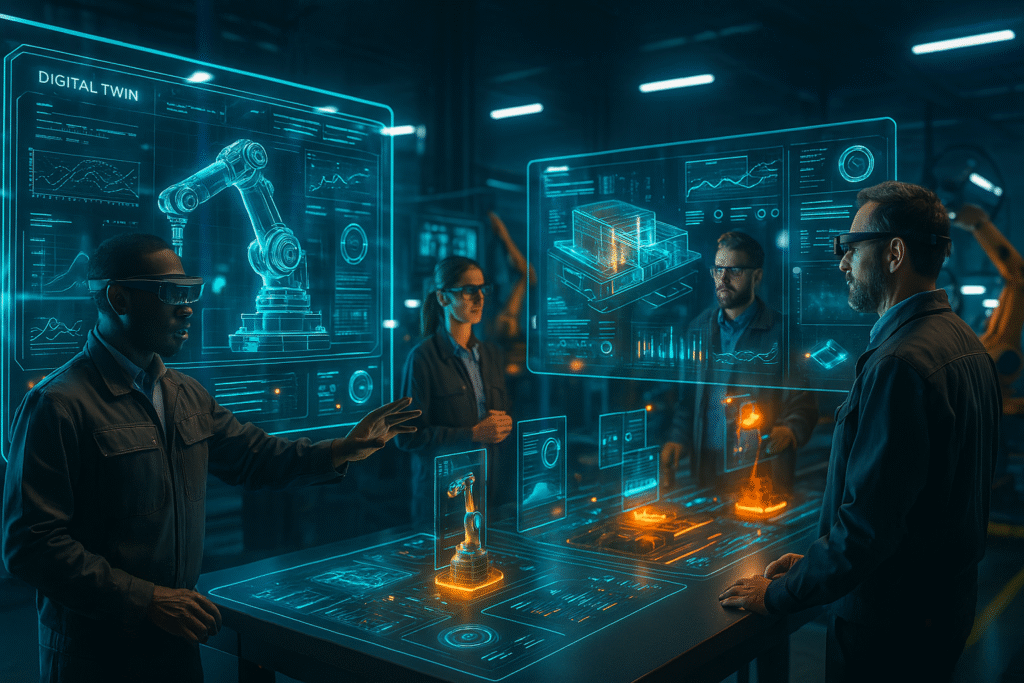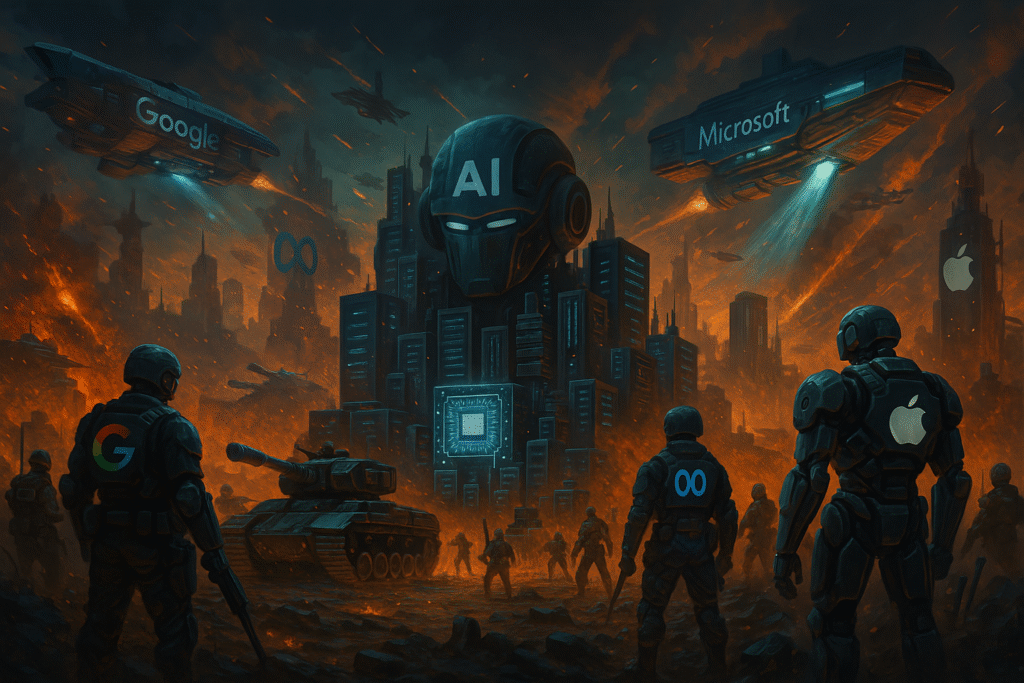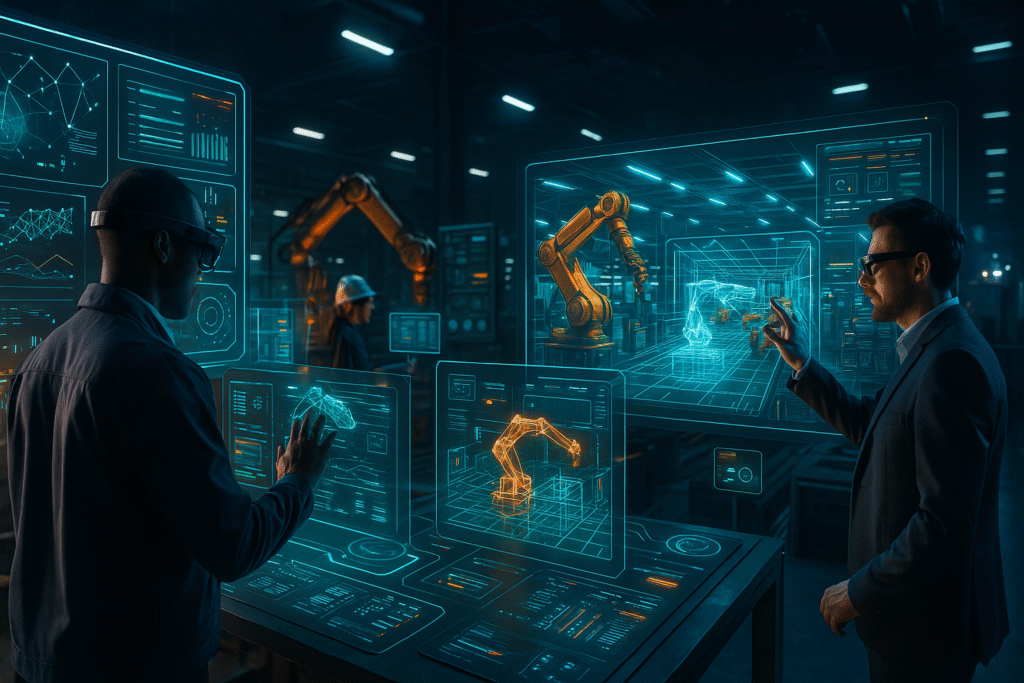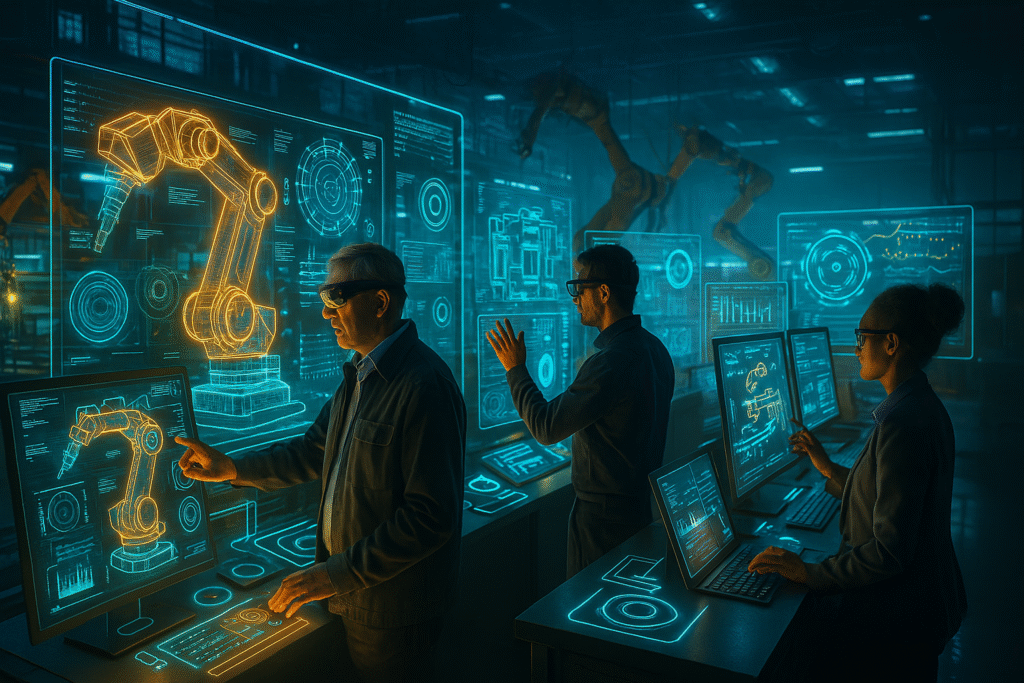The Metaverse in 2025: Introduction: Beyond the Hype
Only a few short years ago, the “metaverse” was the hottest, most insistent word in the global technology vernacular. It was touted as the next great successor to the mobile internet, a revolution that would meet potential through embodied digital space, one that would reshape the nature of work, socializing, entertainment and commerce. This vision, Purple Prose wrote, described with messianic fervor by industry leaders, induced a speculative gold rush.
Billions of investment dollars were funneled into research and development, corporate strategies were being rewritten overnight to prioritize a “metaverse first” agenda and a tsunami of media hype created the impression the new frontier was not merely imminent but already lapping at our feet. Now, in 2025, the deafening sound of that hype cycle has become a distant whisper, supplanted by the somber, difficult facts of an extended “trough of disillusionment.”
The narrative has shifted dramatically. And the industry’s attention, and dispense of capital, has largely shifted to the more immediate and tractable gains produced by generative AI. High-profile executive exits from Meta’s Reality Labs and the indeterminable Olympic shutters of smaller VR projects have caused many pundits to erroneously report the metaverse’s prognosis — that it was, to put it kindly, a massive, expensive mistake.
But to declare the metaverse a failed experiment is to misread the long, non-linear life cycle of deep technological changes. It was never going to be an overnight event, this migration from the 2D, web-based version of the internet we’ve had since 1991 to the 3D, spatial one being built now. Although the consumer-friendly and idealistic one is far from becoming a reality, a more practical, less attention-grabbing, but maybe more important shift is happening.
It will parse the hype cycle to reveal the specifics of where spatial computing stands in 2025 on the ground, in actuality, on its rapid and unexpected boogeyman-like pounce on high-value enterprise applications, its relentless frostbite to the mass-market consumer adoption problem, and the are supernatural threat in “technological and philosophical” barriers slowly/nearly-but-surely being lifted or eroded.

The Enterprise Metaverse: Spatial Computing in Action
Even as the public tuned into virtual concert and belabored the shortcomings of cartoonish social apps, the real and lasting advancement in spatial computing has been occurring behind corporate firewalls. More importantly,
it is the enterprise itself, not the consumer, which has become the main force behind adoption –– driven by a desire not to achieve some frivolous sort of Troy Silva fond social vision, but to actually achieve very real and difficult business problems which can demonstrably show a return on investment.
Digital Twins and Industrial Simulation: The Killer App.
This isundeniablythe most sophisticated and comprehensive application of metaverse technology today. A “digital twin” is a next-generation, hyper-realistic, physics-based, 1-to-1 virtual representation of an object or process or a system of objects and processes.
The Practice Impact: Global automotive powerhouses including BMW and Mercedes-Benz after using NVIDIA’s Omniverse platform to develop a fleshed-out digital twin of their factories. Even before one physical robot is in place or one production line is changed, engineers from across the globe can come together in one shared virtual space and collectively design, simulate and optimize an entire manufacturing process. They can try out new assembly line set-ups, train robot arms and simulate logistical flows completely accurately.

And this industrial metaverse is saving these companies hundreds of millions of dollars in costs, building at far fewer physical prototypes and slashing development cycles from years to months.
Training that is Immersive and Has High Stakes Skill Building:
Training users in the real world to perform complex, dangerous, or expensive tasks can be fraught with challenges. Spatial computing offers a safe, reliable, and also very effective solution.
The Impact in Practice:
The medical industry is among early adopters. Surgical teams are training on platforms like Osso VR to rehearse complex orthopedic surgeries inside a hyperrealistic virtual operating room, learning to build muscle memory and expertise without endangering patients. In the aviation and energy industries, companies are preparing pilots and field technicians for complex machinery and emergency protocols in VR.
This enables them to encounter and diagnose a plethora of rare yet crucial scenarios which would not be possible, or extremely costly, to simulate in the Transcriptome Understanding Transcriptome Understanding Dynamic Response Interpretation DynamicResponseInterpretation Figure 1:
Simulation-Based Testing 2.1 Clinical Scenario An example clinical scenario highlighting the limitations of practice-based training could be a cyclist who has experienced a major accident, potentially involving brain impairments (e.g. stroke, TBI) on an open road.
Collaborative Design, Engineering and Remote Assistance:
If it wasn’t clear already just how far 2D video conferencing falls short for complex, hands-on collaboration it was painfully apparent during the pandemic. Spatial computing is starting to close that gap.
The Impact in Practice:
Architectural firms and industrial design teams are able to collaborate on 3D models and CAD designs in a collective virtual or mixed-reality space with tools like Gravity Sketch and Varjo Reality Cloud.
This is a real feeling of scale and presence that supports intuitive interaction with a digital model that is not possible on a two-dimensional screen. Meanwhile, “remote expert” apps enable a veteran technician back in a main office to see precisely what a field worker sees through their AR glasses, so they can deliver real-time, hands-on guidance and annotations.

III. The Consumer Metaverse: A Fractured World in Search of a Purpose
The consumer side of the metaverse still looks like an awkward, scattered landscape. It’s a pile of isolated, ‘walled gardens’, focused ‘most of the way’ on gaming, but still looking for a viable mass-market use case that can attract hundreds of millions of people into donning a headset regularly.
Dominance and Shortcomings of VR Gaming
VR gaming is currently the most perfected and immersive consumer application. Compound’s ARPDAU has lost a step but is still tracking at a healthy $0.35 x 4M MAU, and the Meta Quest 3 is much more approachable and mainstream-oriented than previous generations, building a sizable and rapidly-growing user base.
A game like Asgard’s Wrath 2 or Beat Saber showcases some of the unique potential and immersion the medium has to offer. But the platform hasn’t yet manifested a genuine, system-selling “killer app” on the level of a Grand Theft Auto or Call of Duty–a cultural phenomenon that makes the investment in hardware worth it for pretty much every category of gamers there are, not just the narrow subset.
The Social VR Experiment:
VRChat, Rec Room, and Meta’s Horizon Worlds – here and in-development – are still home to a niche community of passionate, creative users. Clearly, they’ve proven humankind’s need for embodied, ongoing social interaction in the digital world.”
But they have yet to become mainstream, stymied by technical limitations, lackluster avatars, cumbersome user interfaces and ongoing worries about brand safety and content moderation.
The Hardware and Friction Barrier:
The actual hardware is still a huge barrier to the mainstream adoption of VR, for the general consumer. Though the Meta Quest 3 is lighter and more comfortable than previous versions, the friction of wearing a headset for long periods is a significant barrier to entry for non-gaming applications, such as work or socializing.
In no-fancy-sounding-but-ultimately-vanity-product ‘revolution’ news has the Apple Vision Pro spatial computing productivity mixed reality paradigm finally arrived, or at the very least is it now upon us? It’s not that it’s not impressive on a technological level, especially that amazing passthrough video quality. But its top-shelf pricing and first-gen ergonomics make it very much a developer kit or prosumer product, not a consumer market mass phenomena.
IV. Gradual Erosion of Technological and Philosophical Blocks
Meanwhile, a holistic view of a cohesive, interoperable metaverse — the creation of the “3D internet” — remains long-awaited in large part thanks to these challenges, which collectively represent some of the hottest R&D targets in 2025.
The Interoperability Problem:
The present “metaverse” is actually a “multiverse.” It’s a hopper of siloed, closed, proprietary standups that don’t talk to each other. The holy grail is true interoperability, a world in which a user can pick up their digital identity, their avatar,
their assets, and move fluidly from a space built by Meta to a space created by Google, just like we navigate from one website to another within a browser. This is a gigantic technical and political problem that groups like the Metaverse Standards Forum are only just beginning to grapple with.
How do we interact with the virtual world: The Input and Haptics Sea of Objects Problem:
Hand tracking has made great strides, but it’s not nearly as precise, or as important, as having physical controllers or a mouse and keyboard. The decades-long pursuit of the perfect input method is now pushing into exotic, science fiction territory, from sophisticated haptic gloves to BCIs.
The Problem of Scale and Computation:
To produce a gene pool digital world, one that’s photo-realistic, comprehensive, and coherent over time, while also being accessible in real time for a population exceeding the number of concurrent users possible on the average MMO today, takes an order of magnitude more processing power, not to mention the associated network infrastructure.
This is as much a problem of hardware as it is of software, though, and improvements in AI-driven rendering techniques (such as Neural Radiance Fields, or NeRFs) are offering a glimpse at what might lie ahead.

V. Conclusion: An Evolution, Not a Revolution, is taking Place
The 2025 metaverse is not the glitzy, all-encompassing virtual society that was promised at the peak of 2022 fever.
The speculative frenzy has dried up, replaced by the hard, unglamorous and multi-decade work of building out the basic back-end infrastructure and finding genuine real-world value. The most meaningful advancements‚ and the most tangible ROI, are not in consumer spectacle, but the high stakes, high-value market of industrial and enterprise applications, where spatial computing is today solving billion-dollar problems.
The consumer metaverse is in a much needed time of slow and steady incubation. It ain’t dead, it’s just waiting for three things to dovetail: the hardware to become as easy to wear as a pair of glasses, the software to be far more intuitive, and, perhaps most crucially, the killer app that gives you a reason to jack into the virtual world as powerful and compelling for you as the reason you have to open a web browser now.
The road to the metaverse is a marathon, not a sprint, and, in 2025, the quiet, patient work of laying down its foundation is proceeding apace. The ripple effects are already apparent, from the realignment of enterprise software markets to the rethinking of economic strategies at a national level. We break down that landscape of the 2025 AI arms race in this post: how that arms race is taking shape, and the particular up and downsides of the major contenders in it.
We will look at the key fronts on which this war is being fought, and evaluate the profound, near-term implications for global markets, enterprise adoption, and the future of business, work, innovation, and competition.
What are your thoughts on where “The Metaverse in 2025” is headed next?
External Links:
Metaverse Industry Report 2025 – StartUs Insights
Top Metaverse Development Trends for 2025 – Abhiwan Technology
The Metaverse 2025 Snapshot – IEEE Metaverse Newsletter